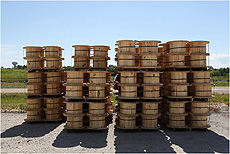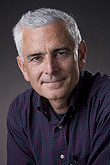Have a safe day!
Wednesday, July 25
3:30 p.m.
DIRECTOR'S COFFEE BREAK -
2nd Flr X-Over
THERE WILL BE NO FERMILAB COLLOQUIUM THIS WEEK
Thursday, July 26
THERE WILL BE NO THEORETICAL PHYSICS SEMINAR THIS WEEK
3:30 p.m.
DIRECTOR'S COFFEE BREAK -
2nd Flr X-Over
4 p.m.
Accelerator Physics and Technology Seminar - One West
Speakers: Alex Murokh, RadiaBeam Technologies
Title: Inverse Compton Scattering Gamma-Ray Source at ASTA
Click here for NALCAL,
a weekly calendar with links to additional information.
Upcoming conferences
|
|
Wednesday, July 25
- Breakfast: English muffin sandwich
- Smart cuisine: chicken noodle soup
- Steak sandwich
- Smart cuisine: maple dijon salmon
- Smart cuisine: Mongolian beef
- California club
- Assorted sliced pizza
- Chicken pesto pasta
Wilson Hall Cafe Menu |
|
Wednesday, July 25
Lunch
- Ham & gruyere crepes
- Mixed greens w/ herb vinaigrette
- Fruit pie
Friday, July 27
Dinner
- Cranberry & walnut salad
- Pan-roasted monkfish w/ red-wine sauce
- Wild mushroom stuffed potatoes
- Sautéed spinach
- Pear tart
Chez Leon Menu
Call x3524 to make your reservation.
|
|
New cable pulling method saves time and money
 |
A stack of about 200 empty cable spools, referred to as Mount Ranson, sits in a parking lot near the Main Injector Ring. Mount Ranson is a reminder of a new technique that allows cable to be installed more quickly and more safely. Photo: Denton Morris, AD
|
There's a photo going around the Accelerator Division titled "Mount Ranson." In the photo, several stacks of empty wooden spools stand in a parking lot, each stack roughly twice the height of a car.
The spools previously held heliax cable – a quarter-inch-wide cable surrounded by copper shielding – that is being replaced in the Main Injector. The picture is named for Jim Ranson, electrical coordinator for AD, who has been overseeing the installation of new cable during the shutdown.
Fermilab used to purchase heliax cable on spools much larger than those pictured in "Mount Ranson."
"These things came in spools that held 5,000 feet of cable," said Cons Gattuso, AD shutdown coordinator. "Just the logistics of moving the cable around in the tunnel was a nightmare."
The spools were so large, they couldn't fit into the Main Injector tunnel without blocking access, creating a safety hazard and limiting how much work could be done at one time in each section of the tunnel. Worse, since each spool contained such enormous lengths of cable, installing the cable without damaging it was difficult.
Gattuso came up with a new plan for this year's shutdown. He asked Ranson to find a company that could recut their large spools of cable into smaller ones. The idea was that with smaller spools, several jobs could be done inside the tunnel at once under safer conditions. Additionally, less cable would be damaged in the process. Ranson put out bids right away.
A company in Carol Springs won the contract and respooled all of the cable.
"The guys said, 'Give us a week,'" Ranson said. "We got them back. One of our technicians, John Van Bogaert, made a list of origins and destinations on the Main Injector ring for each cable and marked the cables so the electricians could easily pick them up."
The cable is for a beam position monitoring system that helps operators see how the proton beam is oriented in the accelerator. With the cable precut and labeled, electricians installed it in the Main Injector at record speed.
"We can now install cable in each house on the Main Injector ring in about four days," said Denton Morris, AD engineering physicist. "Without doing this, it would've been twice that."
Gattuso said labor cost per day for a team of electricians comes to about $6,000.
"When you do the math, it's $30,000 a week," Gattuso said. In total, they'll save the laboratory $180,000 and six weeks of work.
When Morris noticed how quickly the empty spools were piling up outside the Main Injector, he took the photo that became "Mount Ranson."
Ranson was modest about picture bearing his name.
"It's a team effort," he said. "You learn from past mistakes. Next year we'll think of something different to make it even better."
—Joseph Piergrossi
|
Northwestern University
NAME:
Northwestern University
HOME TOWN:
Evanston, Ill.
MASCOT:
Wildcat
SCHOOL COLORS:
Purple and white
COLLABORATING AT FERMILAB SINCE:
1975
WORLDWIDE PARTICLE PHYSICS COLLABORATIONS:
CDF, CLEO (Cornell), CMS (CERN), COUPP, DZero, MINERvA, Muon g-2, NA61 (CERN), PANDA (FAIR)
NUMBER OF SCIENTISTS AND STUDENTS INVOLVED:
Nine faculty, eight postdocs, 16 graduate students
PARTICLE PHYSICS RESEARCH FOCUS:
The theory group studies neutrinos, g-2, quantum chromodynamics, Higgs physics and physics beyond the Standard Model. Experiments include hadronic physics research and searches for glueballs, neutrino cross-section measurements, precision measurements of electroweak properties from g-2 to the W mass, Higgs searches and searches for new physics at all energies.
WHAT SETS PARTICLE PHYSICS AT NORTHWESTERN APART?
We are only an hour's drive from Fermilab (and Chicago's O'Hare International Airport) and have three faculty with joint positions at Argonne National Laboratory and Fermilab.
FUNDING AGENCIES:
DOE Office of High Energy Physics, DOE Office of Nuclear Physics, NSF, Simons Foundation
View all university profiles.
|
'Summer Under the Stars' continues July 25
From NIU Today, July 24, 2012
There's no sign of a break in the heat, but amateur and expert stargazers alike can have some cool fun Wednesday, July 25.
NIU's Summer Under The Stars program, "Eyes on the Sky," continues at 7 p.m. in La Tourette Hall Room 200 to explore astronomy, optics and telescopes.
Donna Kubik will begin the evening with a discussion of the similarities between research-grade telescopes and amateur telescopes and cameras using Fermilab's Dark Energy Survey's optical telescope as an example. Kubik is an NIU alumna and an astrophysicist at Fermilab.
After the talk, participants can choose among several optics activities, from playing with periscopes to assembling Galileoscopes for stargazing.
Read more |
|
What fills space?
Craig Hogan, director of the Center for Particle Astrophysics, wrote this column.
 |
|
Craig Hogan
|
If you follow the news about physics, you might think that physicists don't know what they are talking about when it comes to space.
I am not talking about the mysteries of outer space, or cataclysms like black holes. I mean ordinary space itself, the inner space between particles everywhere—what we used to call empty space or vacuum. What's in it?
Sometimes we hear that atoms are "mostly empty space." Now we read in the papers that the newly discovered Higgs field "fills all of space" and "gives particles mass," that it acts like a kind of space-filling "molasses," or that it's like a space-filling crowd of groupies hanging on as a celebrity's posse.
On the other hand, astronomers tell us that space is expanding. Last year, the Nobel Prize in physics was awarded for the discovery that the cosmic expansion is speeding up. Scientists think that this acceleration is propelled by what they call "dark energy," which fills and refills that ever-expanding void of intergalactic space. Cosmological space is said to be expanding in some places (between galaxies) and not expanding in others (such as Brooklyn, to choose Woody Allen's example).
It gets even worse if you dig deeper. For example, the Higgs field is much weirder than the comparisons with molasses or crowds suggest, since it does not actually drag or impede particles, but still somehow shares its mass with them.
Stranger still, consider another space-filling field that also adds mass to everyday substances, in a way different from the Higgs field. The gluons of the strong nuclear force field create most of the mass of atoms through the energy of their incessant motion inside tiny bubbles of space that we call protons and neutrons. Since the mass-giving gluons are immune to the Higgs field, they have no mass themselves, but only add energy because of their motion. Moreover, they are held inside those bubbles by a gluon field that fills empty space everywhere between the bubbles…in just those places in space where the added mass isn't.
Space is the first concept of physics we all learn as little kids, yet it is entangled with some of the deepest mysteries confronting physics. Confusing, koan-like paradoxes about space are not just pablum: They reflect a real and profound disparity of descriptions, at a deep level of mathematics, about what defines a vacuum, a position, a particle or a time.
It may be that all the space of the universe began, and may end, dominated by the energy of the vacuum, an expanding space devoid of particles. It may be that when examined over very short time intervals, space as we know it does not even exist, but dissolves into a cloud of quantum indeterminacy: It may never sit still, but constantly seethe in microscopic motion. It may be that space has many more than three dimensions on very small scales, while there may be only two truly independent dimensions on large scales. It may even be that all of these exotic possibilities actually apply in the real world.
At Fermilab, we are working on experiments including the Dark Energy Survey, the Holometer and the CMS experiment at the Large Hadron Collider that will probe these ideas in very different ways. If you want to find out more—watch this space!
|
ES&H weekly report, July 24
This week's safety report, compiled by the Fermilab ES&H section, contains six incidents.
One employee was stung by a wasp.
Another employee was stung by a wasp and suffered a subsequent infection. Medical treatment and lost time make this case a DART.
Another employee was stung by a bee and suffered a subsequent infection. Medical treatment makes this case recordable.
One employee turned and stumbled, falling with both arms outstretched to break his fall, and consequently fractured both wrists. He required medical treatment and lost time, making this case a DART.
An employee was struck in the eyebrow by a brass coupling while removing a transfer line. Medical treatment makes this case recordable.
An employee suffered minor irritation on her finger while scraping paint. The case required first-aid treatment.
Find the full report here. |
Cernettes sing about their men stuck on night shifts at CERN
From World Radio Switzerland, July 24, 2012
The first band ever to have its picture featured on the world wide web was Les Horribles Cernettes, a '60s band created to entertain the physicists at the CERN in Geneva. They were created back when the web came into being at the CERN. The band's original mission was to sing about the woes of waiting for boyfriends stuck all night at the lab. WRS's Pete Forster talks to members of the band, Angela Higney and Silvano de Gennaro about the history of the band and the music.
Read more |
|